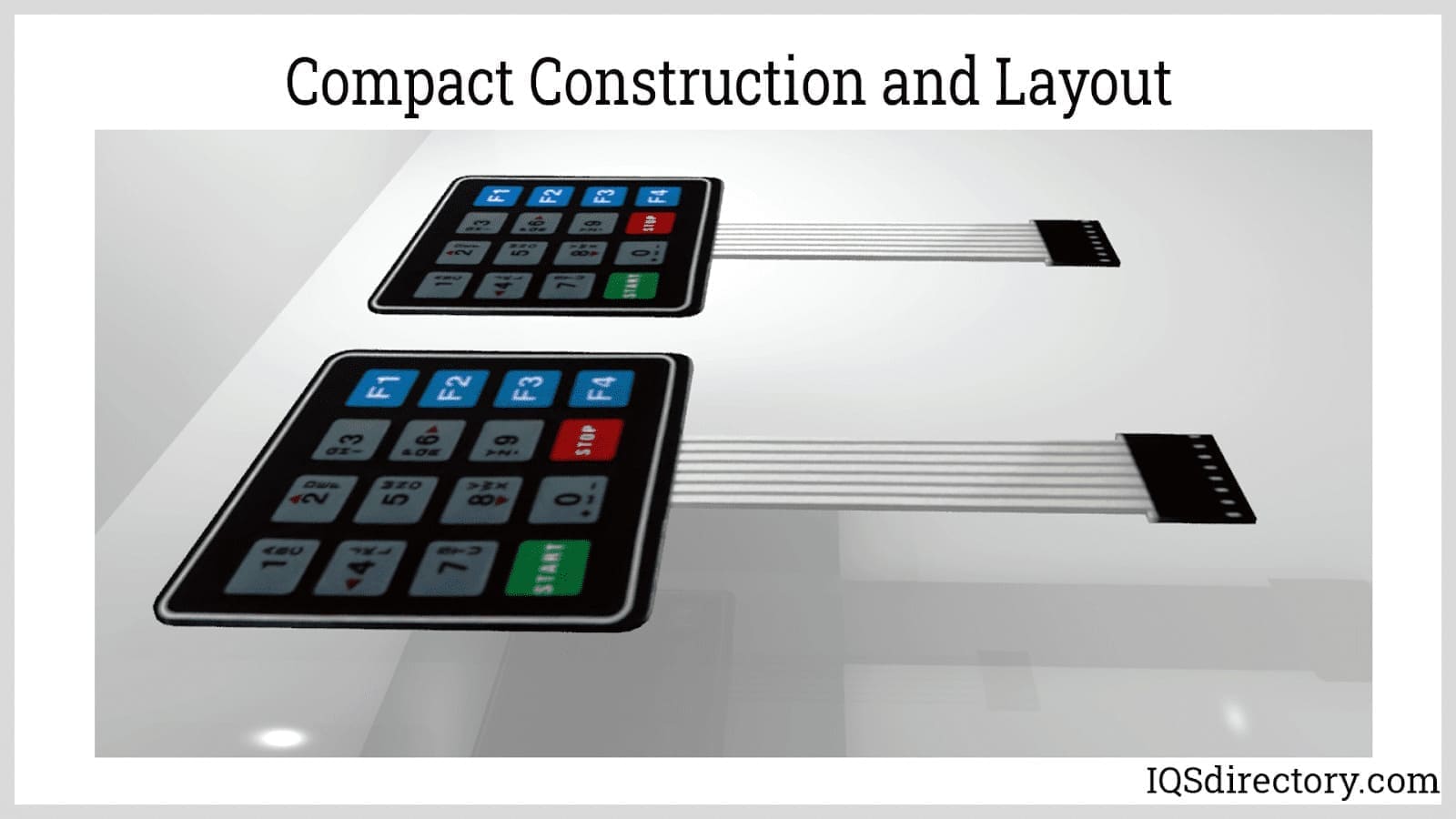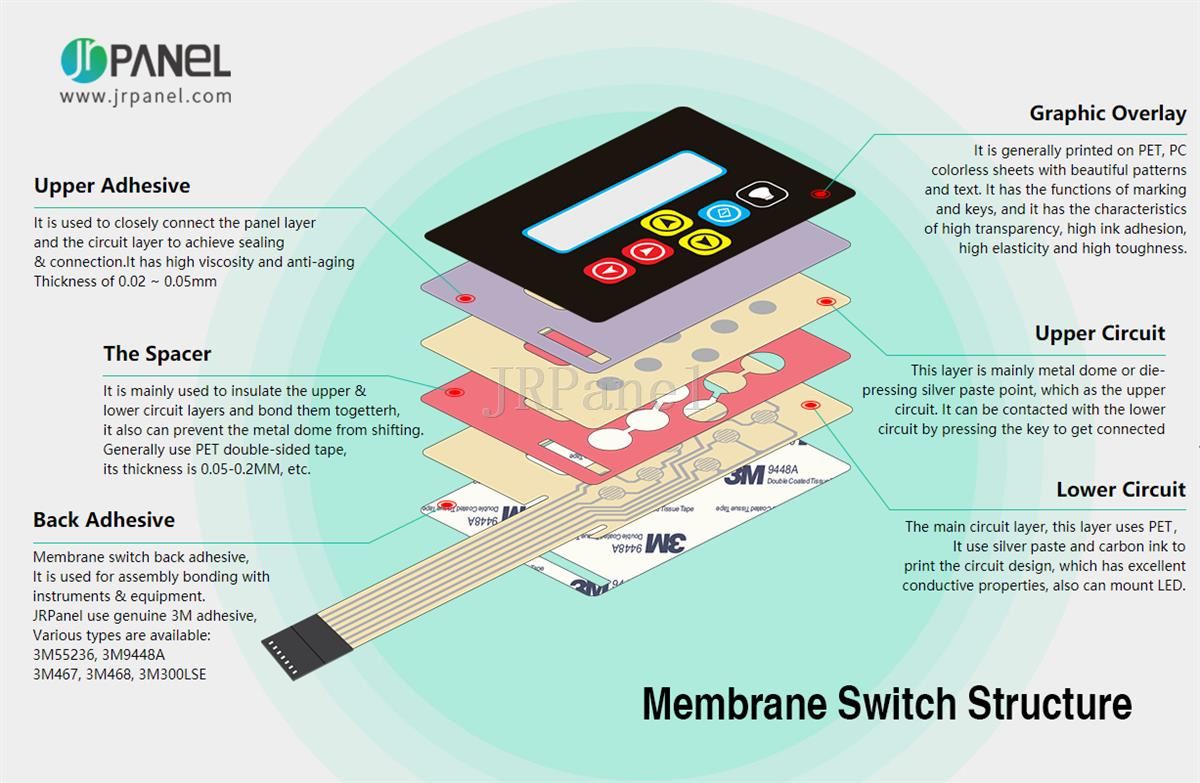Top Benefits of Integrating a Membrane Switch Into Your Electronic Equipment
Wiki Article
Comprehending the Functionality of Membrane Layer Changes for Individual Interface Instruments
The performance of membrane switches over stands for a substantial development in interface layout, integrating efficiency with visual flexibility. These buttons run through a multi-layered framework that translates user interactions right into electric signals, enabling both small layouts and durability against ecological aspects. As industries significantly prioritize user experience, understanding the subtleties of membrane layer button innovation comes to be vital. What effects do these developments hold for future applications, and how might they redefine user communications across various tools?What Are Membrane Layer Switches?
Membrane layer switches are innovative interface devices that help with customer communication with electronic equipment. These functional components include multiple layers, consisting of a graphic overlay, spacer, and a published circuit layer. The design permits a seamless integration right into different digital tools, improving both the aesthetic and useful aspects of user interfaces.
Membrane switches are commonly used in a broad array of applications, from family home appliances to industrial equipment and clinical devices. Their building and construction usually features a slim profile, making them an excellent selection for compact designs. The responsive responses provided by these buttons can be engineered to satisfy details customer choices, making sure effective communication between the user and the device.
Durability is one more significant advantage of membrane switches, as they are immune to dust, dampness, and chemicals, which improves their life-span sought after environments. In addition, these buttons can be tailored in terms of shape, size, and visuals design, enabling branding and user-specific functions. In general, membrane changes stand for a useful option for enhancing user experience in digital gadgets, combining performance with visual appeal in an efficient fashion.
Just How Membrane Switches Over Work
Operating on an uncomplicated concept, membrane changes use a split construction to sign up individual input effectively. Each button contains numerous layers, including a published circuit layer, a spacer layer, and a leading visuals layer, which are designed to work together flawlessly. When an individual presses the top layer, it compresses the spacer layer, bringing the conductive elements of the circuit layer right into contact with each other.This call produces a shut circuit, signaling the device to implement a particular function. The layout permits different setups, consisting of tactile feedback, which can boost the user experience by supplying a physical experience upon activation. The products made use of in membrane layer buttons often include adaptable substrates, such as polyester or polycarbonate, which make sure toughness and durability against deterioration.

Key Advantages of Membrane Layer Switches

An additional considerable benefit is their compactness. Membrane buttons are thin and lightweight, which enables manufacturers to conserve space in their devices without compromising performance. This attribute is especially valuable in applications where weight and quantity are critical factors to consider.
In addition, membrane buttons are immune to dust, moisture, and chemicals, enhancing their sturdiness. This strength prolongs their lifespan and decreases the requirement for constant replacements, causing cost financial savings gradually.
In addition, the responsive responses offered by membrane switches can be maximized to enhance user visit this page interaction. They can include attributes such as elevated buttons or distinct clicks, improving usability and user experience.
Applications Throughout Industries
Interface devices making use of membrane switches are widespread in a wide selection of markets, showcasing their versatility and performance. Membrane Switch. In the medical sector, membrane layer switches are integral to gadgets such as analysis devices and person tracking systems, where their durability and simplicity of cleansing are vital for maintaining health requirements. Likewise, in the vehicle sector, these buttons are utilized in control panel controls and infomercial systems, offering a sleek and modern user interface for individuals.Additionally, the customer electronic devices industry take advantage of see this membrane layer switches in appliances and portable tools, where compact layout and user-friendly user interfaces improve user experience. Industrial applications also utilize membrane layer changes for control board in machinery and automation systems, highlighting their effectiveness and resistance to rough settings.
In the aerospace and protection markets, membrane switches are utilized in cabin controls and tools, where integrity and efficiency under severe conditions are paramount. Furthermore, the pc gaming industry progressively integrates membrane layer buttons in controllers and arcade makers, adding to an engaging customer experience. In general, the convenience of membrane changes enables their extensive usage across countless industries, underscoring their value in modern-day interface design.
Future Fads in Membrane Layer Switch Technology

Additionally, making use of sophisticated products, such as useful source polycarbonate and polyester movies, is expected to increase, supplying improved sturdiness and resistance to environmental stressors. These materials add to the total long life of membrane layer switches, making them appropriate for harsher industrial applications.
In addition, the unification of clever modern technology, consisting of IoT connectivity, will allow membrane switches to interact with other devices and systems, helping with an extra interactive customer experience. This trend aligns with the growing need for clever devices across different markets, from healthcare to customer electronics.
Last but not least, personalization alternatives are prepared for to expand, allowing makers to produce bespoke options customized to specific user requirements and preferences. These developments will certainly position membrane switches as important parts in the development of interface innovation.
Conclusion
Finally, membrane layer switches stand for a pivotal advancement in interface innovation, using a trusted and versatile option for diverse electronic applications. Their layered construction promotes portable layout, while features such as tactile responses improve user interaction. The durability versus ecological variables further solidifies their utility throughout multiple industries. As developments in material scientific research and touch picking up modern technologies proceed, the capability and applicability of membrane switches are expected to expand, reinforcing their value in modern digital tools.
Report this wiki page